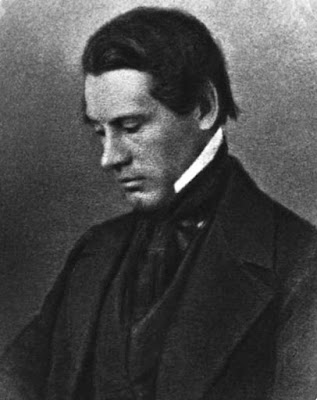Church, also called the Pine Street Church.
of breakdown that lasted for three years. She recalled him as having a "nervous excitability."
"An interesting record of the place and times, my sister particularly cherishes a bed-quilt of which each parishioner worked a little square, autographing it with indelible ink."
"The quilt is similar to others made by religious congregations in Philadelphia during the 1840s; many use identical English floral chintz fabrics, which may indicate that precut fabric could be purchased for use as appliqués. In 1842, the ladies had presented a nearly identical quilt (now in the collection of the Los Angeles County Museum of Art) to the Reverend George S. Boardman, who also preached at the church, suggesting that each church developed a distinctive style of quilt design."
"As the wife of a distinguished clergyman, Grandmother possessed hosts of friends. Whenever she revisited the Quaker City, she would make a round through its business center, gate-crashing executive doors, and always welcome." Dwight Brainerd
And see their article in Blanket Statements, the American Quilt Study Group's newsletter (#147) on a related Philadelphia album with the popular dahlia print and the clues to professional seamstresses. A post:
http://barbarabrackman.blogspot.com/2021/11/professional-album-quiltmakers-in.html
More on Mary Whiting Brainerd:
The Canadian article in French with the picture of Mary and her two children:
https://shgbmsh.org/wp-content/uploads/Cahier-102-Extrait.pdf
Mary's biography of her husband:
Mary's FindaGrave file:
https://www.findagrave.com/memorial/10731128/mary-brainerd
And her grandson's 1948 family biography Ancestry of Thomas Chalmers Brainerd:
https://archive.org/stream/ancestryofthomas00unse/ancestryofthomas00unse_djvu.txt


.jpg)






.png)








































